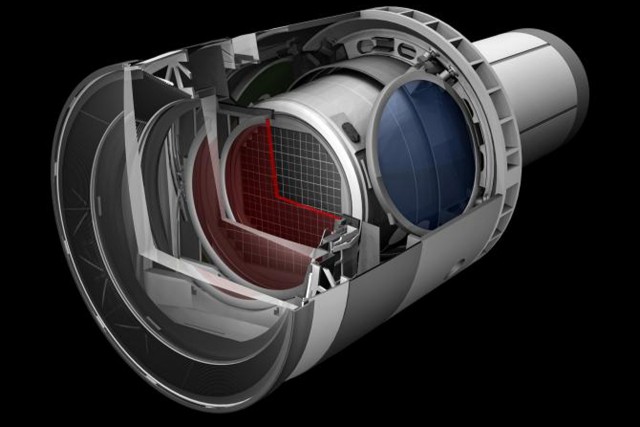Science
Related: About this forumWorld’s largest camera will capture billions of stars
by Emiko Jozuka

Funding has been secured to construct what will be the world's most powerful digital camera. Weighing in at more than three tons—around the same size as a small car—and packing a 32,000-megapixel punch, the camera will capture high-res images and video of our cosmos.
The Large Synoptic Survey Telescope camera, or LSST for short, will be constructed at the Department of Energy's SLAC National Accelerator Laboratory, with operations set to begin in 2022. The goal is to take digital images of the entire visible southern sky from atop Cerro Pachon mountain in Chile.
The camera is expected to snap up the "widest, deepest and fastest views of the night sky ever observed" over a ten-year time span. This will be the first time a telescope will catalogue more objects in the universe than there are humans on Earth. In other words, this device will spy out tens of billions of objects and produce films of the sky in crystal clear imagery.
"The telescope is a key part of the long-term strategy to study dark energy and other scientific topics in the United States and elsewhere," said David MacFarlane, SLAC's director of particle physics and astrophysics.
more
http://arstechnica.com/science/2015/01/worlds-largest-camera-will-capture-billions-of-stars/
ChairmanAgnostic
(28,017 posts)Doesn't seem to have enough storage space to hold them all.
Fumesucker
(45,851 posts)tclambert
(11,085 posts)All the inhabitants of all the planets warmed by those stars will want them released and returned. The captors could demand as much as ONE MILLION DOLLARS.
ChairmanAgnostic
(28,017 posts)gordianot
(15,237 posts)I hope this survives the NASA Senate committee headed by one of the top ten Republican Demagogues to ever reside in the Capital.
ChairmanAgnostic
(28,017 posts)Although I would rate him in the top five.
gregcrawford
(2,382 posts)PeoViejo
(2,178 posts)Do you really want that much detail?
2naSalit
(86,536 posts)should it survive the Cruz missile in the Senate, maybe it can find his soul out there.
valerief
(53,235 posts)I'm self-spanking.
Spitfire of ATJ
(32,723 posts)Judi Lynn
(160,516 posts)Brookhaven | Long Island, NY | USA
Taking Pictures of the Sky with LSST

[font size=1]
Artist rendering of LSST on Cerro Pachon, Chile. (Image Credit: Michael Mullen Design, LSST Corporation)
[/font]
One of the commenters on our very first post wanted to hear more about the Large Synoptic Survey Telescope (LSST), one of the three cosmological projects that involve Brookhaven Lab. Set high on a mountaintop in Chile, LSST will be a very big and expensive ground-based telescope. Planning for the project started near the end of the 20th century and the experiment probably won’t start taking data in a scientific manner until 2020.
The story is that at a decadal survey 10 years ago, the person who first proposed that the word “synoptic” be used in the project’s name had a misunderstanding about what synoptic really means. Either way, the name has stuck. Synoptic, by the way, comes from Greek word “synopsis” and refers to looking at something from all possible aspects, which is precisely what LSST will do.
Astronomical survey instruments fall broadly under two categories: imaging instruments that take photos of the sky, and spectroscopic instruments that take spectra (that is, distribution of light across wavelengths) of a selected few objects in the sky. LSST falls into the first category — it will take many, many images of the sky in the five bands, which are a bit like colors, from ultra-violet light to infrared light.
What’s special about LSST is the amazingly large field of view and cadence. The field of view of LSST is the size of the sky that it can observe at the same time and is about 3.5 degrees in diameter. You could fit the Moon seven times across this large field of view. This, of course, means that if you want to have great detail in these images, you need a lot of pixels. The LSST camera will have resolution of 3200 megapixels, about a thousand times more than an average consumer camera.
More:
http://www.quantumdiaries.org/2011/02/07/taking-pictures-of-the-sky-with-lsst/
Johnny Rash
(227 posts)
FiveGoodMen
(20,018 posts)This is very interesting and intriguing!